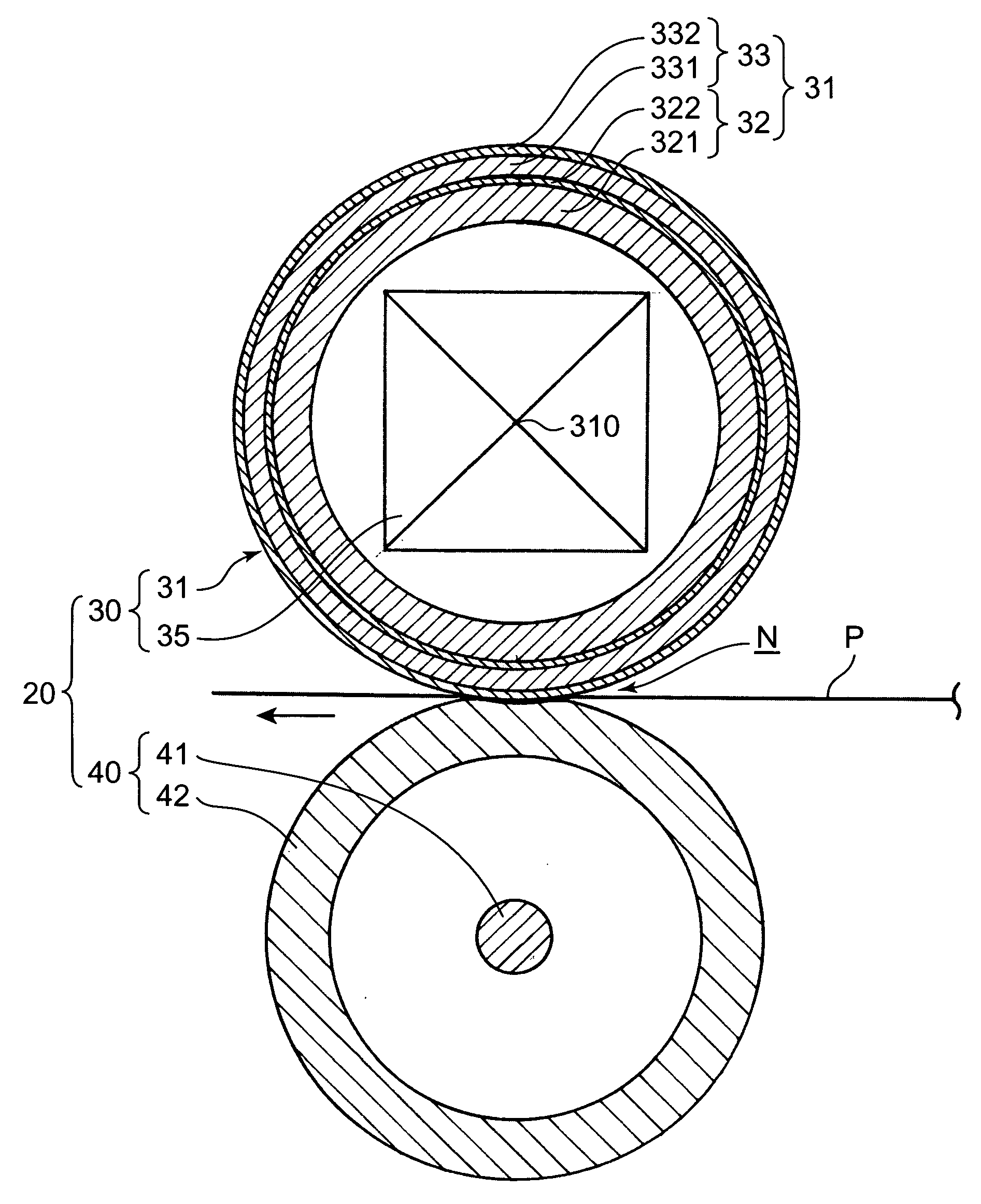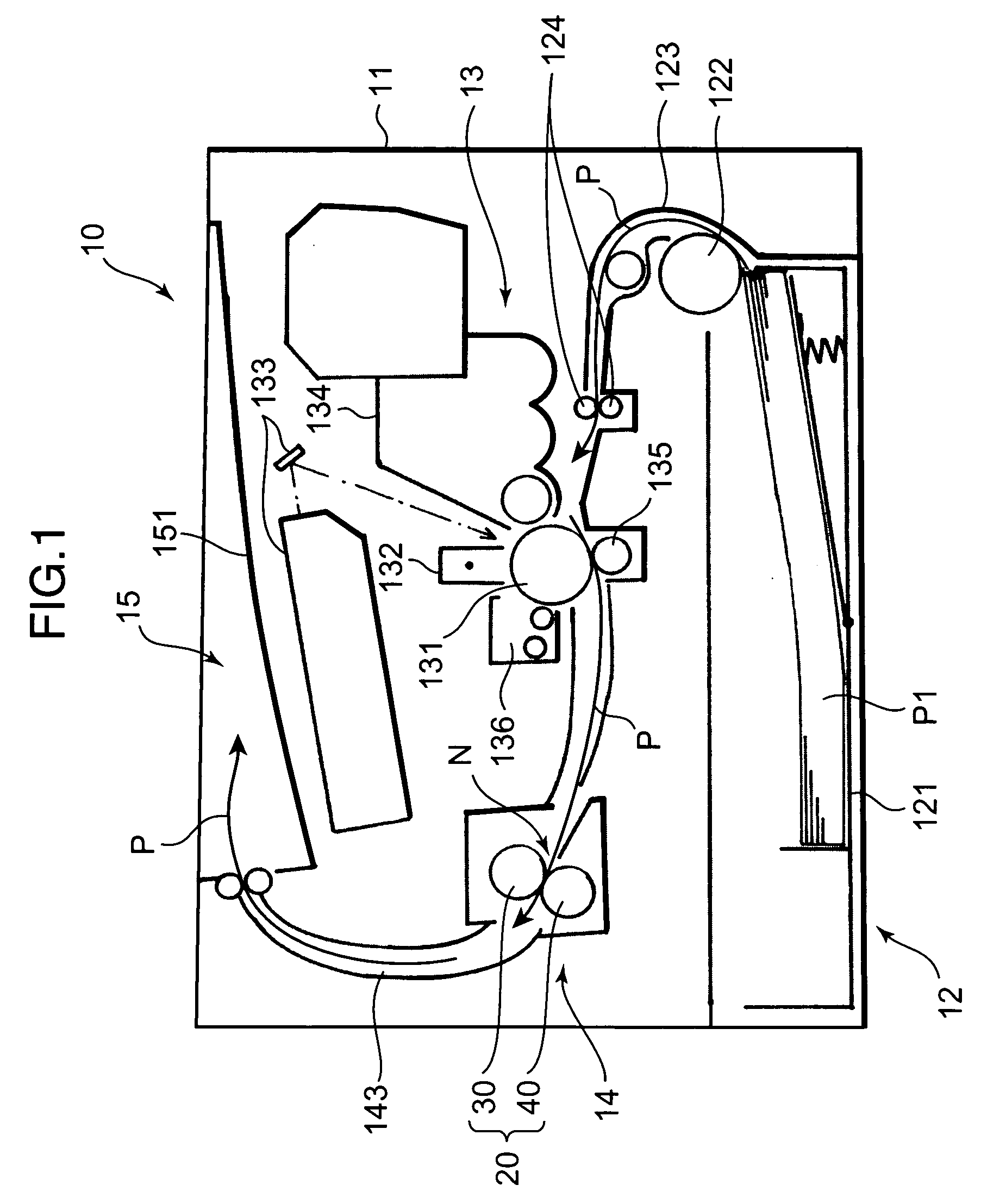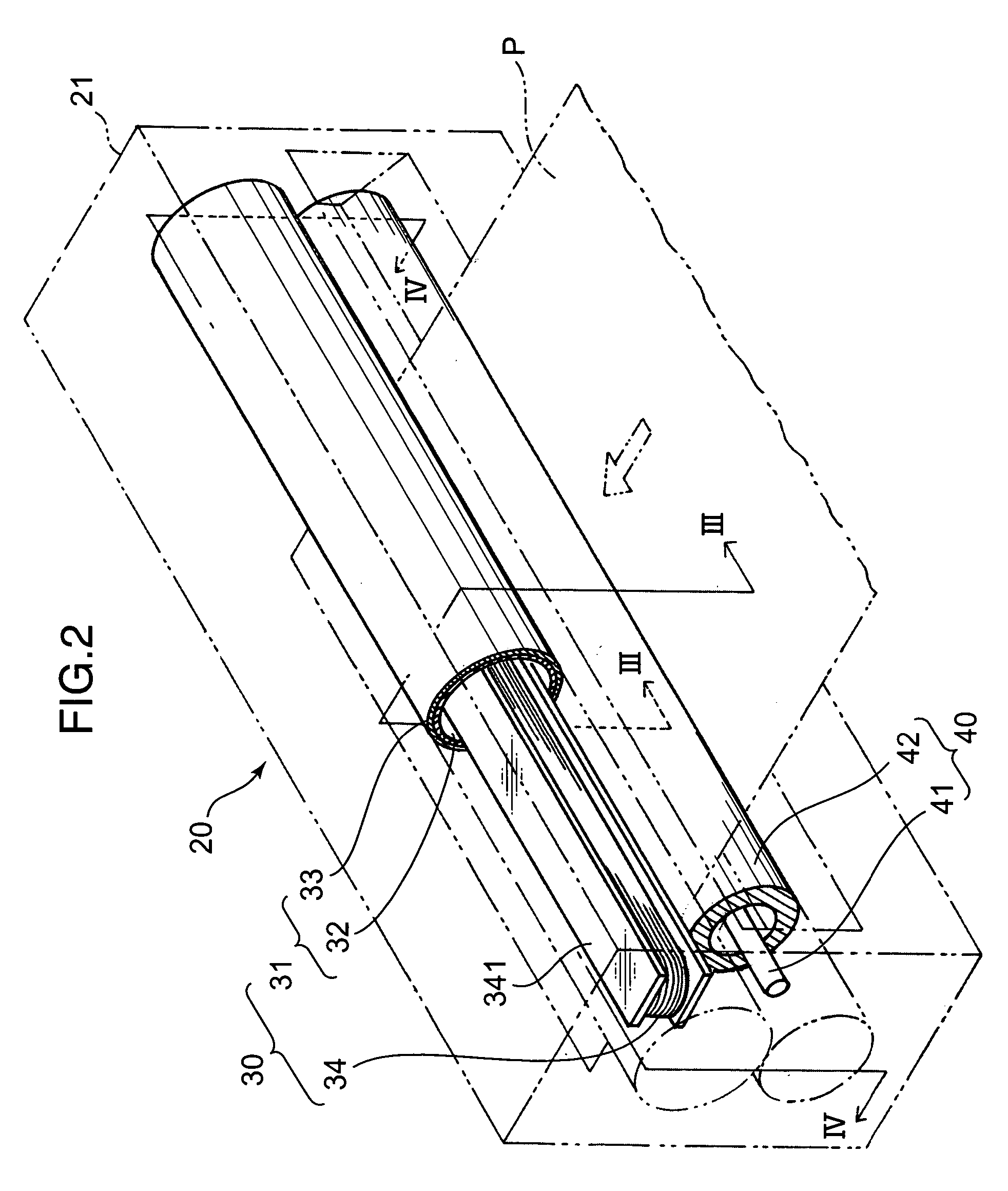Fixing device and image forming apparatus
a fixing device and image forming technology, applied in the field of image forming apparatus, can solve the problems of poor thermal efficiency of halogen lamps, slow response (or low heat-up speed), requiring a fairly long time-period, and approaches have limitations for themselves, so as to reduce the generation of joule heat, effectively suppress the rise of temperature, and the effect of high fixing member heat-up ra
- Summary
- Abstract
- Description
- Claims
- Application Information
AI Technical Summary
Benefits of technology
Problems solved by technology
Method used
Image
Examples
first embodiment
[0045]FIG. 2 is a schematic partly cutout perspective view showing a fixing device 20 according to the present invention. FIG. 3 is a sectional view taken along the line III-III in FIG. 2, and FIG. 4 is a sectional view taken along the line IV-IV in FIG. 2. In these figures, each thickness dimension of a fixing roller 31 and a pressing roller 42 is illustrated in an exaggerated manner. As shown in FIG. 2, the fixing device 20 comprises a fixing member 30, a pressing member 40 and a box-shaped housing 21 housing the fixing member 30 and the pressing member 40.
[0046] The fixing member 30 includes a tubular-shaped fixing roller 31 disposed in an upper region of an inner space of the housing 21, and an induction coil 34 housed in the fixing roller 31. More specifically, the fixing roller 31 is mounted to an upper portion of the housing 21 rotatably about a tube axis 310 (see FIG. 3) extending in a sheet-width direction orthogonal to a sheet-feeding direction (indicated by the two-dot-ch...
second embodiment
[0080] In the fixing device 20′ when the fixing belt 37 is circulatingly moved between the tension roller 35 and the fixing roller 36 by a rotational driving force of the tension roller 35, a magnetic flux is supplied from the induction coil 34′ to an outer surface of the fixing belt 37. Therefore, in a state before the metal layer 38 does not reach the Curie temperature (200° C.), the temperature-sensitive metal layer 382 is quickly heated up to the Curie temperature by Joule heat generated by an induced eddy current.
[0081] Thus, when a sheet P is fed to a nip zone N, the sheet P is moved leftward in FIG. 6A while being pressed and nipped between the pressing roller 42 and the fixing belt 37 circulating along the fixing roller body 362 which is elastically deformed. During this movement, the sheet P is subjected to the fixing process based on heat from the fixing belt 37.
[0082] Then, when the temperature of the temperature-sensitive metal layer 382 becomes equal to or greater tha...
PUM
 Login to View More
Login to View More Abstract
Description
Claims
Application Information
 Login to View More
Login to View More - R&D
- Intellectual Property
- Life Sciences
- Materials
- Tech Scout
- Unparalleled Data Quality
- Higher Quality Content
- 60% Fewer Hallucinations
Browse by: Latest US Patents, China's latest patents, Technical Efficacy Thesaurus, Application Domain, Technology Topic, Popular Technical Reports.
© 2025 PatSnap. All rights reserved.Legal|Privacy policy|Modern Slavery Act Transparency Statement|Sitemap|About US| Contact US: help@patsnap.com



